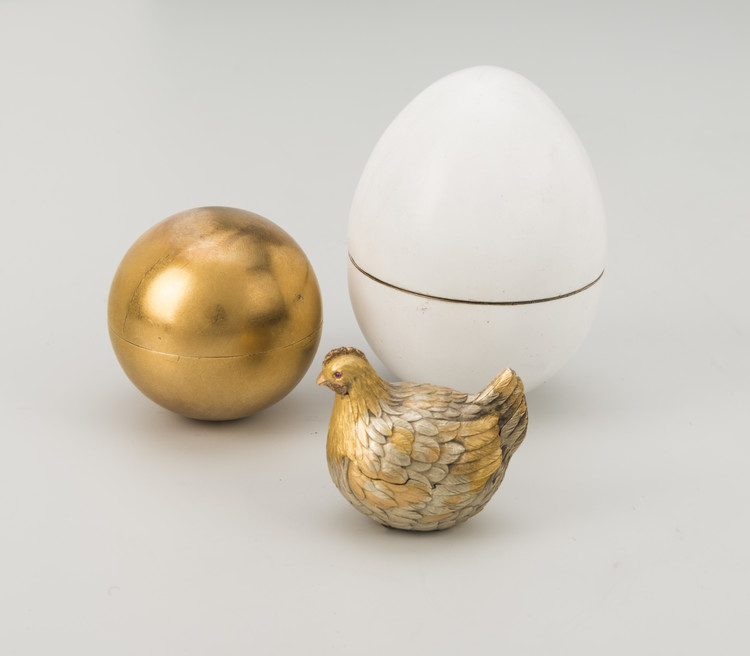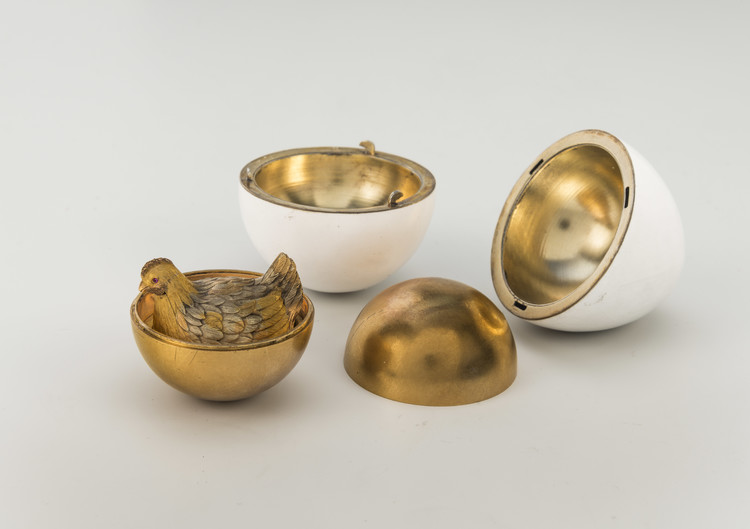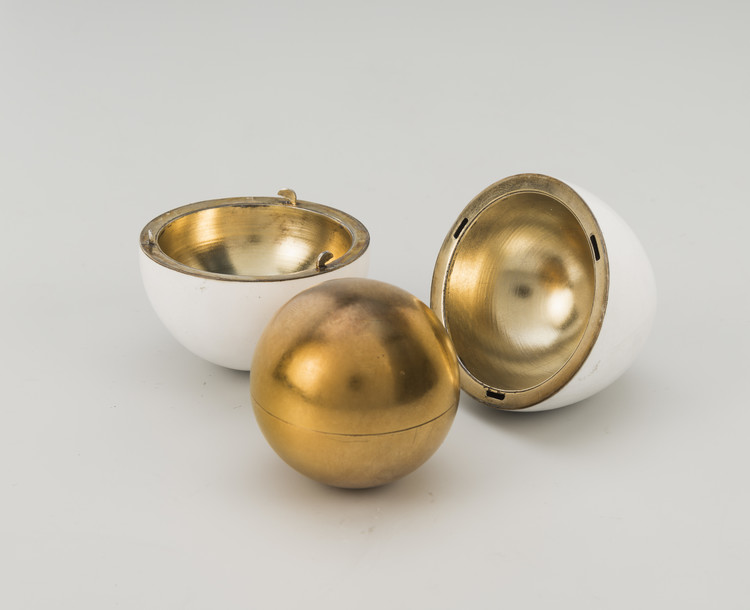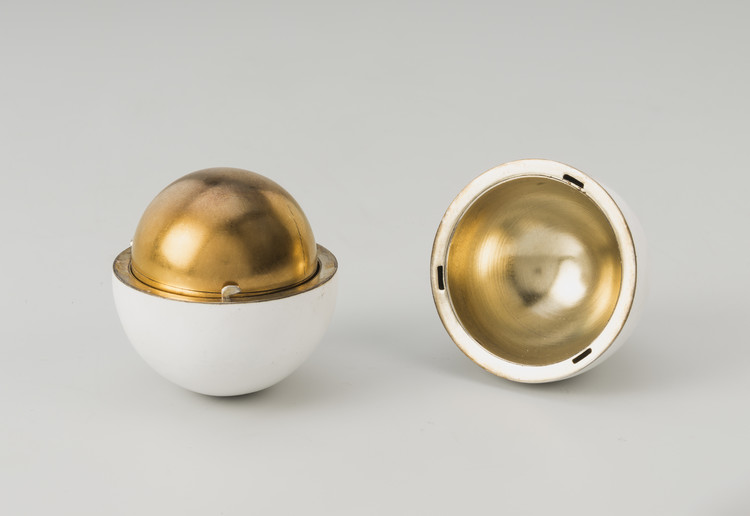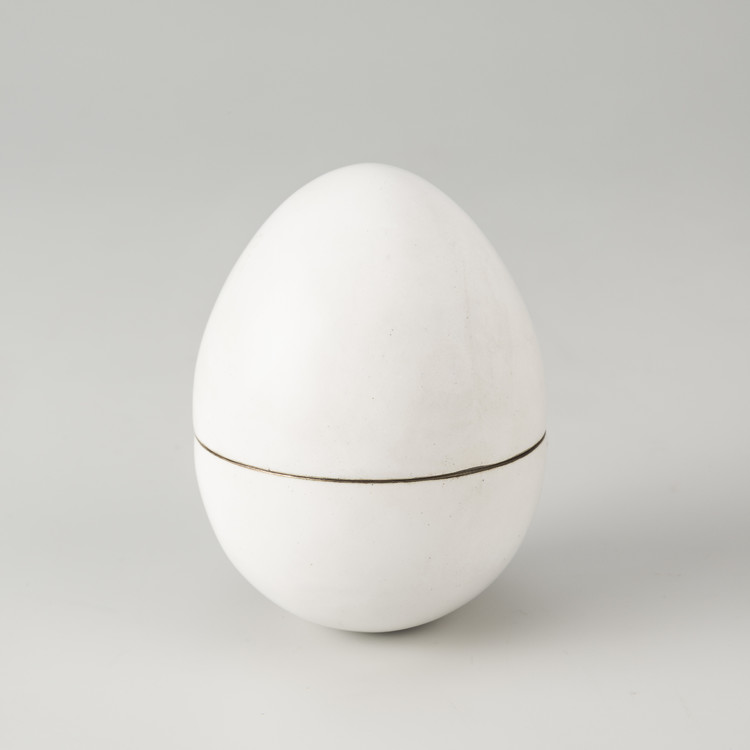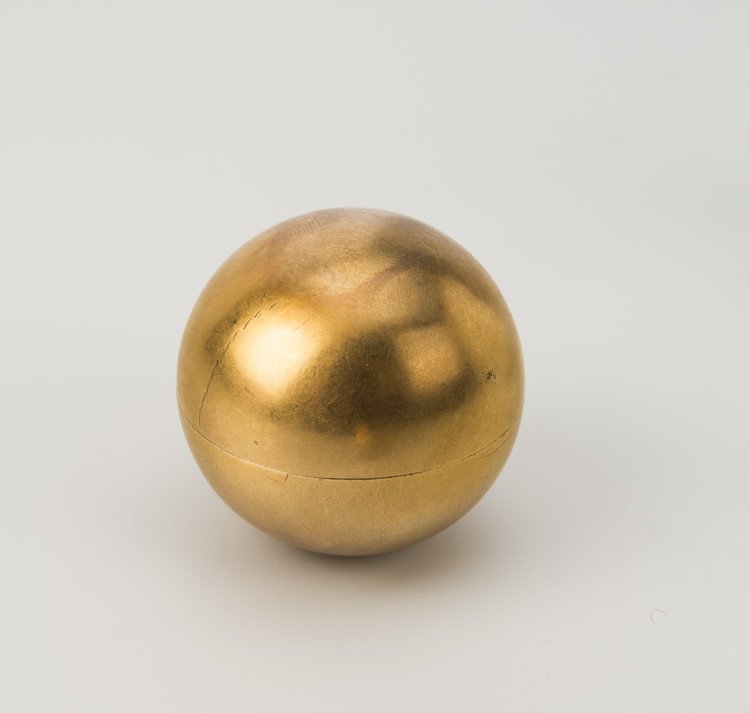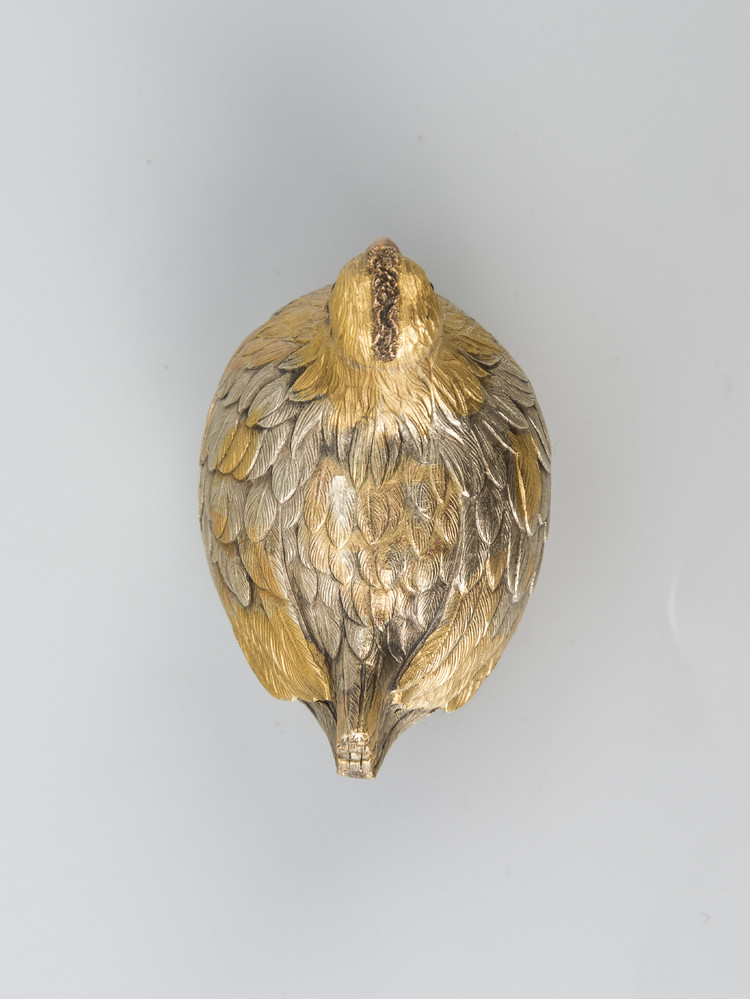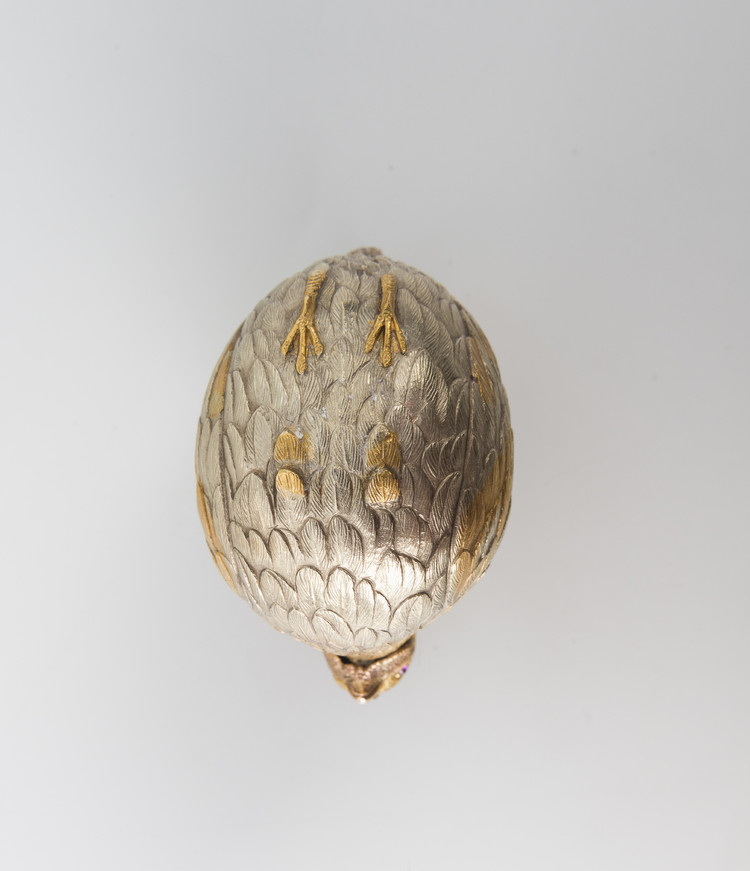The first Easter egg was made by Carl Fabergé in 1885 for Alexander III. It was a gift for his wife, Empress Maria Feodorovna, née Princess Dagmar of Denmark, who praised the work of the “young but already fully mature, first-class jeweler” three years earlier at the All-Russia Industrial and Art Exhibition in Moscow. Carl Fabergé, who had been the head of the family business for ten years at that point, entered this kind of competition “in art and industry” for the first time and won the gold medal and the favor of the empress, who thrilled the jeweler with the purchase of a pair of cufflinks in the antique style.
At the request of Alexander III, his brother Grand Duke Vladimir Alexandrovich, president of the Imperial Academy of Arts, became a curator of sorts of the first Imperial Easter project, while the emperor was co-author with Fabergé of the first egg. The jeweler was supposed to create a version of a French Easter egg of the early eighteenth century that had belonged to the daughter of Frederick VI, the Princess Wilhelmine (1801–1891), who had willed it to her relatives, King Christian IX and Queen Louise of Denmark (parents of the Russian empress Maria Feodorovna). The eggshell was made of ivory and inside contained another egg, of gold, with declivities for a perfume bottle, and the hinged lid shaped as an enamel yolk. When it was opened, a brown enamel hen could be removed from a diamond nest; inside the hen was a tiny crown with diamonds and pearls, and hidden within that was a ring with diamonds. Fabergé did not make a copy of the ancient model but created his own original and ele-gant variation. The egg is made of gold and covered with opaque enamel, slightly sueded, like an eggshell. Inside there is a gold yolk, within which is a hen of multicolored gold, containing a tiny diamond Imperial crown. As for the final surprise, Alexander III decided to replace the ring with a small egg (“of some precious stone,” thinking “it could be very sweet,”) and asked his brother Vladimir to pass on the request to Fabergé.
When the work was done, Vladimir Alexandrovich sent the emperor a letter — “brief instructions on how to handle this complex object” and gave the creation a high rating: “In my opinion, the work is a total success and even deserves praise for its refinement and embellishment.”
The emperor was also pleased, saying the commission “was a success that could not be better” and hoped that “the egg will impress its future owner.” Maria Feodorovna liked it so much that the commission became a tradition. Every year during Passion Week, Carl Fabergé presented the emperor with yet another Easter masterpiece, original and unique. After the death of Alexander III, during the reign of his son, the firm made two Easter eggs, one for Dowager Empress Maria Feodorovna, and one for Alexandra Feodorovna, wife of Nicholas II. From 1885 through 1916, fifty Easter eggs were made for the royal family. Seven vanished without a trace in the 1920s and 1930s, eggs that had been given to Maria Feodorovna in 1886, 1888, and 1889 (gifts from her husband) and 1897, 1902, 1903, and 1909 (given to her by her son). The remaining forty-three are in major collections and pri-vate hands, and now Russian museums hold the greatest number of Imperial eggs. As for the missing egg of 1897, ornamented in mauve enamel, its surprise has been preserved; it started the Easter portrait gallery of the Romanovs, a heart that turns into a three-leaf clover with portraits of Nicholas II, Alexandra Feodorovna, and their first daughter, Olga. This treasure is now in the Fabergé Museum.
